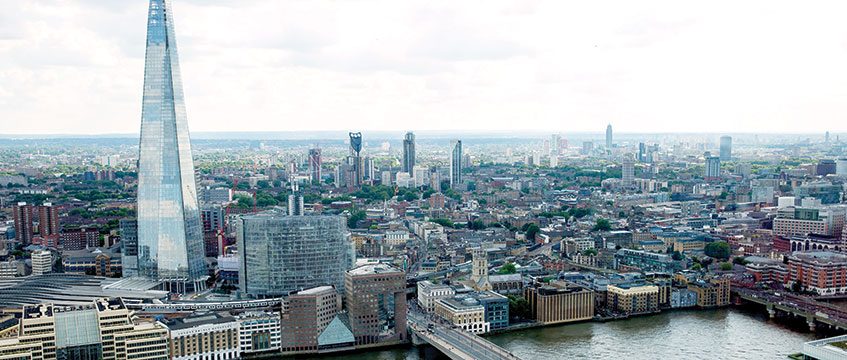Changing commuter patterns and working practices in the wake of the Covid-19 pandemic could provide a boost to a clutch of central London’s office submarkets.
Euston, King’s Cross, Paddington, Waterloo, the South Bank, Victoria and the area around Liverpool Street have been identified by JLL as key areas for future office space demand due to each having a major transport hub.
The agent said employers are likely to look to locate their offices close to transport hubs on the fringes of more traditional central London locations if they only require their workers to be in the office for part of the week. That way, London-based jobs will become more attractive to people living further afield, in turn meaning a larger catchment for talent.
The emphasis on wellbeing by occupiers could further accelerate the trend for more large campus-style developments that are more easily deliverable around the capital’s edges, JLL said in its latest report The Future of Office Demand: Central London.
These campuses could also become vital spots for retail and food and beverage occupiers as the single-ownership structures of these developments mean owners are more able to cross-subside to allow for an offer that supports office rents than provides revenue in its own right.
This shift will also cause a divergence in rents and yields across London’s submarkets after several years of levelling up, the report says.
“The central London office investment market could become more polarised over the next year and beyond,” said Julian Sandbach, head of central London office markets at JLL.
Jon Neale, head of UK research at JLL, added: “London’s connectivity advantages and its young, talented population suggest it will remain one of the world’s most dynamic urban economies, but we expect companies to be far more selective in the quality and locations they are seeking for their offices.”
Fit-out evolution
The evolution of office space will also accelerate with even more emphasis post-Covid placed on user experience.
De-densification will become a larger theme, initially spurred on by the need to socially distance, but later on resistance to close human contact could prevail as offices will likely house up to five generations of workers with differing views on infection control, the report says.
This trend will also be moved on by the desire for fit-outs that encourage interaction with more collaboration and meeting space and fewer formal desks, JLL reported. Touch-free entry systems, air quality and ventilation, outdoor space and features such as yoga rooms will also become even more important.
Changing office needs could give rise to occupiers looking to relocate as they see new office space in different London locations as “vital to their success”, said Elaine Rossall, JLL’s head of UK offices research.
However, Neil Prime, head of UK and EMEA agency at JLL, warned that companies that “quickly embark on short-term reactive space and cost-saving measures will probably find the results unsatisfactory in due course”.
JLL flagged that up to 25m sq ft could be required by occupiers who have lease expiries between 2020 and 2023.
To send feedback, e-mail louise.dransfield@egi.co.uk or tweet @DransfieldL or @estatesgazette











